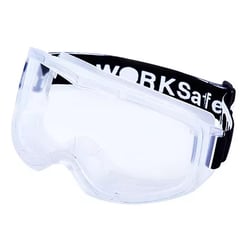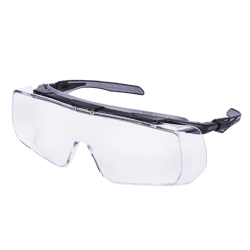MENU
Workplace Safety and Health (WSH)
Overseers may find it challenging to prioritise Workplace Safety and Health (WSH) when other pressing issues such as revenue, schedule, and client expectations dominate their time and resources.
However, every employee has the right to a workplace that is safe.
Employers must strive to ensure the work environment is as safe as possible by implementing various procedures to identify and eliminate potential hazards.
Every workplace must establish WSH practices that are sustainable and iterative. Neglecting this can lead to severe consequences for individuals, communities, and organisations.
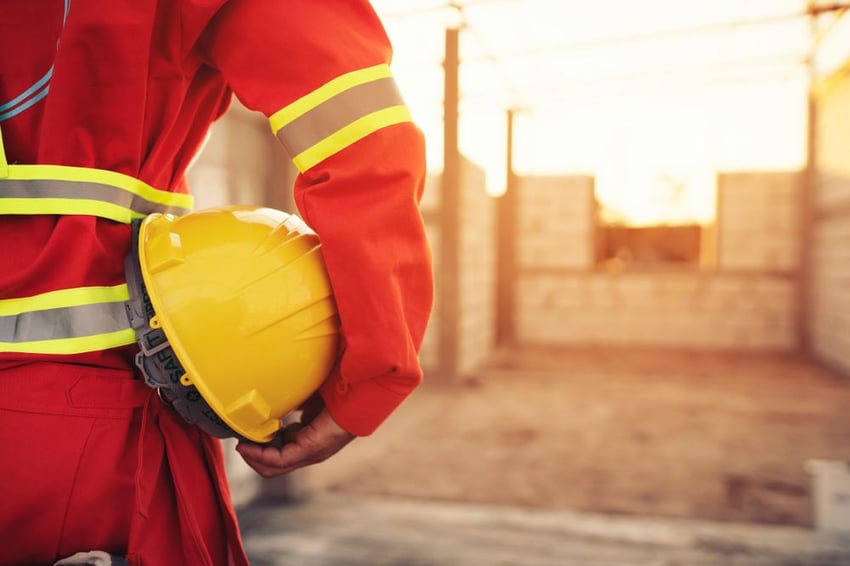
Workplace Safety and Health Act
The Workplace Safety and Health Act (WSHA) in Singapore was enacted in 2006 after many civic disasters that injured and killed many people. The act aims to make the workplace safer for employees and civilians by creating a series of legislation based on three principles:
- Eliminate or minimise the risks created by all stakeholders.
- Instil a greater ownership of safety and health outcomes within the industries.
- Prevent accidents through higher penalties for compromises in safety management.
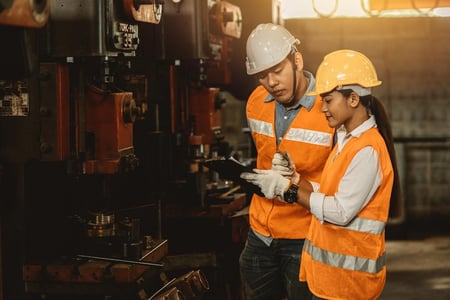
Holistic Framework Combining Risk Assessment, Training & Personal Protective Equipment (PPE)
These principles established a new standard for WSH that is holistic and integrated across various bodies.
This holistic approach mitigates some of the risks associated with a more modular approach; staff can combine risk assessment with training and effective Personal Protective Equipment (PPE) to help them identify and eliminate real risks to their health and safety.
Risk assessments can be formal— conducted by a WSH professional or safety officer— but they can also describe workers' decision-making process. In high-risk industries, employees must continuously make decisions concerning their personal safety. A training component allows employees to better understand the risks associated with their industry and improves their decision-making skill to eliminate chances of injury. Meanwhile, PPE is essential to ensure that employees are bodily protected in the event of a disaster.
PDS International is a one-stop store that provides all three – Risk Assessment, Training, and Personal Protective Equipment (PPE). Learn how to assess risk and protect yourself with our risk assessment and training workshops, which are tailored to your specific industry. Meanwhile, our selection of professional-grade safety gear will help you stay safe on the job, whatever your line of work may be.

Challenges Faced
Many companies may resist investing in appropriate PPE as the highly specialised gear may be extremely costly. Some workplaces may also struggle to ensure their employees adhere to PPE standards. Employees resist complying because they feel that the PPE is uncomfortable or impedes their workplace productivity.
These concerns can be eliminated by directing workers to PPE options that are cost-effective, comfortable, fit well, and don’t impede their work. The PPE required will vary widely across industries and occupations to accommodate for the different hazards present.

For specific high-risk industries, it is imperative that quality PPE is used. Without PPE that is effective and comfortable, workers face significant risks to their health.
The PPE requirements will vary between industries. We’ve outlined some of the main categories and their PPE specifications below:
1. Food Processing & Food and Beverage Services
The food processing industry comprises many different roles: food factory operatives, chefs, servers, and more. All of them face risks, such as cuts, burns, and oil splashes, which are best prevented with food processing safety gloves and boots. Meanwhile, N95 masks as well as chemical-resistant gloves can eliminate the risks of inhalation of dry ingredients and contact with chemicals.
Food processing as well as food and beverage workers in Singapore tend to work in slippery environments caused by cleaning and spillages. This slipping hazard can lead to serious injuries such as broken bones and head injuries. This risk can be eliminated by anti-slip safety shoes and absorbent mats that soak up spills.
In factories where there are consistent loud noises, factory workers face the risk of damaged hearing in the long term. This problem can be avoided with earmuffs or earplugs.

2. Logistics
The logistics field comprises crates and pallets handlers, packers, and deliverers. While all these individuals are vulnerable to cuts, bruises, and slippages, they each also face specific challenges.
Crates and pallets handlers risk large splinters and are at-risk of blunt-force injuries by moving around heavy goods. Cut-resistant and impact gloves can mitigate the possibility of these injuries.
Through the repetitive work, packers may incur calluses, blisters, bruises, and cuts. Cut-resistant sleeves and gloves, as well as safety cutters, can help workers in this field significantly reduce workplace injuries.
Meanwhile, deliverers face road threats outside of a warehouse environment. They ought to be equipped with the appropriate safety gear and trained in safe lifting and moving practices to minimise their risks of injuries.

3. Healthcare
Healthcare workers such as doctors, nurses, surgeons, and hygienists are mostly exposed to biohazards when examining patients, performing procedures, or handling hazardous waste. Disposable surgical masks, coveralls, disposable gloves, and shoe covers provide an essential barrier between the body and any fluids it may come into contact with.
This medical PPE will also protect from airborne pathogens and other undesirable air particles.
During waste disposal and cleaning, these professionals may be exposed to the hazardous chemicals and human fluids that have been spilt. Clean these fluids with appropriate chemical absorbent mats that will not leave behind any residue. All wastes should be cleaned using disposable waste cans and bags into a leakproof bin with a foot-operated lid.

4. Construction
The three leading causes of fatality in the construction industry are falls from great heights, vehicle accidents, and contact with electricity. The top causes of injury are body stress, slipping/tripping, and being hit by moving objects.
Eliminate blunt force traumas with impact gloves, safety work boots, hard helmets, and safety glasses. The equipment should be worn at all times on construction sites by workers and managers.
Alongside following stringent safety practices, construction workers should use high-quality harnesses to eliminate fall risks when working at great heights. Communication at these heights can also be improved through use of monitoring systems with automatic SOS signals.
With all these appropriate measures and equipment in place, both fatalities and injuries will be reduced.

5. Oil and Marine Services
Oil and marine workers are exposed to various physical challenges. For example, riggers must do rigging work involving pulley mechanisms to ensure the cargo is transported efficiently. Safety gloves can mitigate risks such as rope burn that riggers will face in Singapore.
Workers who operate in the engine room are exposed to high heat, oil, and chemicals, which can be highly hazardous. These workers can protect themselves from the heat and chemical burns with welding face shields, flame retardant clothing as well as heat- and chemical-resistant gloves. An effective “man-down” system involving personnel monitoring systems can also quickly ensure that injured workers are looked after.
As marine workers are often isolated from medical services, stringent operating procedures and PPE requirements must be followed to eliminate possible risks.

Personal Protective Equipment (PPE) covers many categories which will not be relevant to all industries. A nurse, for example, will probably use an N95 mask instead of a welding face mask.
The types of PPE can roughly be broken down into safety apparel, safety tools, and safety systems. Safety apparels are PPEs from head to toe; safety tools are gadgets for workers to perform their job safety, while safety systems consist of the workplace environment and workforce.
1. Safety Apparel
Safety apparel is used in almost all industries to protect the body from potential injuries as well as keep the clothes clean and free from debris.
For example, coveralls are one type of safety apparel that are worn to protect against flames, chemicals, and particles as well as improve worker visibility to reduce the risk of accidents.
Other types of safety apparel also include disposable eyewear, hand and arm guards, footwear as well as head, ear, and face protection. Whatever the safety apparel, it is most important to choose those that are made of high-quality, appropriate materials that are designed to protect you in respective situations.

They often come in a latex or powder form and are commonly used by hospitality workers, food processing workers, and food and beverage workers. These gloves are practical; they prevent the hands from becoming dirty and contaminating other foods and surfaces.
Mechanic gloves offer an extra layer of protection, providing dexterity and grip while also protecting your hands from oil, grease, and other automotive fluids. They come in different cut ratings from A to F.
They cover the arms and prevent hands from being burnt.
They are commonly used by welders, engineers, miners, and other workers exposed to high heat.
If users are handling corrosive acids, alkali and solvents they should be wearing a pair of chemical gloves.
As gloves have different material composition and thickness for various permeation resistance and protection levels, users also have to consider the timeframe that they are exposed to these chemicals and solvents.
There are many more types of hand protection appropriate for different work settings, all of which are designed to make the workplace much safer. Chat with us for glove recommendations or refer to our glove guide to select the right pair of gloves.

Shoes are essential to protect the feet from blunt force trauma and chemical spillages. They come in a variety of configurations to best suit the job at hand. Anti-slip shoes are great for hospitals, research and F&B industries due to slipping being a common hazard. And more robust shoes used in logistics and construction feature protective plates to defend workers from the many physical hazards at their workplace. With such a variety of shoes, choosing one can be difficult.
The best safety shoe is a safety shoe that you love wearing, that fits within your budget. Here are three things to look out for in your next safety shoe shopping trip:
Comfort: Try on shoes with thick midsoles and insoles, which help to adequately support and protect your feet. To test out the shoe, walk in it and squat. Simulate movements that you’d carry out at work to be sure that the shoe is a good fit for you. Mesh and microfibre mesh uppers materials offer great breathability as long as weather protection isn’t a priority.
Safety: Choose the right shoe based on your work requirements. Safety shoes come in S1, S1P and S3:
- S1 shoes have a toecap, protecting you from falling objects.
- S1P shoes have a toecap and a penetration-resistant midplate. They protect you from both falling objects and penetration from the ground.
- S3 shoes have a toecap, resistant midplate and are weatherproof. They are perfect for heavy work.
Be sure to find out if the ratings are accredited by third-party testing.
-
Do check out our best lightweight safety shoes and boots. There are two designs to choose from: Low-cut composite toecap safety shoes and mid/high-cut composite toecap safety boots.
-
Within steel toe safety shoes, there are two designs to choose from: low-cut steel toecap safety shoe and mid/high-cut steel toecap safety boots.
Cost: The old adage “you get what you pay for'' is definitely in effect here. Buying safety shoes that seem too cheap to be true is simply not worth the risk. Errant safety shoe manufacturers often cut costs by using inferior materials or skipping out on testing. Choose a shoe that balances price with quality. This will save you money in the long run, and may also save your life.
Still have problems picking out the right shoes? Our friendly team stands ever-ready to assist you. Speak with us via Live Chat now.

The eyes must be protected against all hazards as they are extremely important yet delicate. In industries where workers are exposed to bodily fluids, chemicals, flying pieces of wood or metal, they should use proper protective eyewear. Reputable eyewear brands will subject their products to rigorous testing to ensure that their item is safe for the workplace demands, such as UV protection against harsh sunlight.
There are three categories of eyewear:
- Safety Glasses without prescription or with prescription
- Safety Goggles
- Safety Overspecs
Different protective eyewear is available to suit different needs. Suppose you work in a high-risk industry with flying pieces of metal. In that case, you will want to select safety goggles that are more resistant to debris, compared to workers who may simply need a barrier to prevent their skin from coming into contact with certain materials.
If you wear spectacles, there are options for protective prescription glasses that fit over your spectacles or attach to the side. Spectacles are not considered protective equipment and need to be covered by industry-standard protective gear.
PDS Safety’s eyewear has been tested and certified to meet the highest impact protection standards, so you can feel confident knowing that your eyes are safe while wearing them. Our Asian-fit design also ensures a comfortable, snug fit no matter what shape your face is.

Safety tools are products that complement and enhance industry safety practices. These can include respirators, Work At Height (WAH) tools, electrical safety, and more. They are designed to ensure that safe workplace procedures can be performed across all industries.

The respirator category covers gear that protects workers and civilians from dangerous air particles. For example, masks, air line systems, gas masks, air filters, ventilation systems, and welding respirators are under the respiratory category. They are ideal for workplaces that deal with dangerous chemicals, airborne pathogens, dust, and asbestos as they provide the user with air that is not toxic to breathe in.
Historically, exposure to dangerous airborne particles had caused workers long-term illness. Many of these dangerous substances are carcinogens or have adverse health effects. In a medical setting, this type of PPE is essential for nurses and doctors to treat illnesses with airborne pathogens without contracting the illness and spreading it further. Notably, hospitals that treat COVID-19 patients use respiratory safety equipment to prevent further outbreaks.
Note the different effectiveness amongst the 3-ply, N95 masks, and powered respirators:
- Powered respirators offer the most comfort but require recharging and cleaning
- N95 masks are better for particulates
- 3-ply masks are good for convenience

Work-At-Height (WAH) protection includes edge protection, horizontal and vertical fixed systems, roof anchors, ropes, and carabiners as well as rescue equipment such as steel slings, rescue winches, absorbers, and stress relief tools.
It is not just the construction industry that is at risk of WAH injuries. Marine, engineering, and even the hospitality industry are subject to the hazards that working at heights creates.
For extreme and moderate heights, use WAH equipment to limit the risk workers are exposed to. Meanwhile, WAH equipment is non-negotiable in high-risk environments such as construction and marine, where a fall can mean not just injury but death.
High-quality WAH tools are imperative. Ensure all hooks, anchors and ropes are well-established before engaging in WAH. The worker should use a full body safety harness when possible to limit injury should they fall.
All WAH protective tools should be used in conjunction with solid safety practices and under guidance. Workers should also remember to conduct appropriate risk assessments. Sometimes, there is no need to even work at heights – the work can be carried out safely on the ground instead.

One of the leading causes of death in construction is exposure to electricity. Another common electrical accident is an arc flash, which creates a high-temperature explosion, vapourising surrounding metal, setting fires, and causing severe burns. Construction workers, engineers, electricians, and overhead line workers are at risk of these dangers. Ensure your workplace is well-equipped to deal with electrical hazards using electrical safety tools.
Electrical eye and head protection, as well as grounding equipment, are essential when working with electrical currents. Electrical safety equipment that is insulated will protect workers from shocks. Insulated equipment can include gloves, mats, and ladders that will limit the electrical current conducted through a human body. Protective overalls that are heat- and arc-flash-resistant also offer adequate protection.
Always test electrical equipment in low-risk scenarios before they are used. Damaged insulation, tools, and equipment can all pose a major WSH threat to an individual. Also, ensure that all equipment is grounded properly. Proper grounding practices can eliminate unwanted voltage and reduce the risk of electrocution.
All electrical PPE should be used alongside thorough WSH education and practices specific to the injury. PPE will limit the extent to which an individual is injured, but learning effective health and safety practices is the best protection.

Safety systems exist to help facilitate best practice methodologies across all workplaces. Safety system equipment includes detectors, spill control, safety containment devices, emergency stations, and safety cabinets. All of these will ensure that a hazard is either identified or eliminated as quickly as possible.
Detectors and emergency stations are ubiquitous everywhere. These are found not only in professional settings, but households and schools. Science labs will include eye and face wash stations that will efficiently remove chemicals from the skin and eyes.
Detectors are helpful when working in environments with limited ventilation. They can identify various particles in the air such as hazardous gases like CO that are responsible for thousands of deaths worldwide. Detectors can also come in the form of breathalysers to identify alcohol on the breath.
Looking for a recommended detector? Consider Blackline Safety's detectors, which can automatically create reports, sound alarms, and are configured to detect a wide variety of gases.
Healthcare also falls under the safety systems banner. Blood pressure monitors, first aid essentials, sanitisers, thermometers, water filter jugs, and oximeters ensure that your workplace is well-equipped to deal with any injuries that occur.
Keep Your Employees Safe With PDS International

At PDS International, we are the People Dedicated to Safety (PDS), a leading one-stop solution for workplace safety in the Asian region. From identifying hazards and developing protective equipment to safety training that is tailored to your needs, we provide holistic support to ensure that all your workplace safety needs are met.
We understand that the quality of the items we stock will directly affect how people operate at work, which is why we pride ourselves on providing high-quality safety equipment that is effective and economical. We have over 7,000 safety products from over 113 reputable brands on our website. If you have questions about our products or WSH practices, take advantage of our 24h live chat where an expert can offer you personalised advice and answer any question you have.
We continuously offer new promotions to make safety equipment accessible to everyone. We also have news updates to educate you and your team on the best WSH products and practices across all industries.
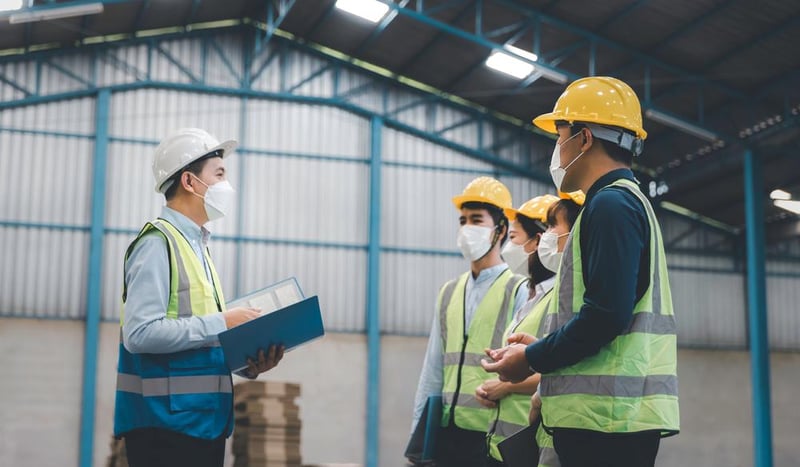
At PDS International, we provide not only high-quality and extensive range of products, but excellent support to make your workplace safer for everyone. Check out our other safety services below:
1. Gas Detector Rental
If you’re working in cramped spaces that are vulnerable to gas leaks and oxygen depletion, consider renting a gas detector from us. Our modules will detect CO2, H2S, flammable gases and oxygen in the atmosphere so you can stay alert to hazards in the atmosphere. We offer long term and short term rentals at competitive prices. Get yours today!
2. SRX
If you need prescription glasses but have to wear eye protection at work, then wearing safety eyewear over your glasses isn’t the only option. We can develop safety prescription eyewear so you remain comfortable without compromising your eyesight. Book an eye test and get your prescription safety glasses.
3. Tech Service
We offer an array of inspection calibration services to help ensure your WSH practices and tools are operating effectively. We provide safety harness inspections, consultancy and hazard analysis, and customised design and interaction engineering services. Our expert team can answer all your questions and work to remove your specific workplace hazards.
4. Punch Out
Punch Out is like an official safety kiosk housed within your purchasing platform. It allows you to browse and add things to the cart that, once purchased, are sent from our website to your eProcurement or ERP platform to raise a purchase order. This innovative method creates a better online shopping experience and helps you quickly source items. Get in touch with our team if you have questions about our Punch Out service.







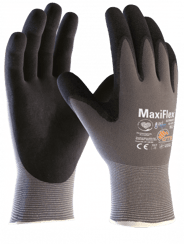

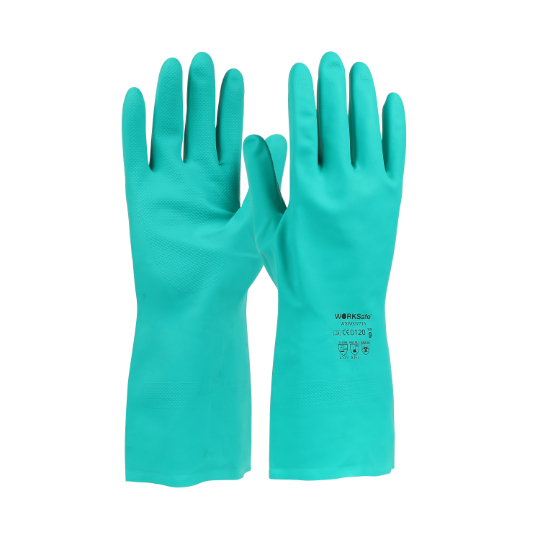
.png?width=250&height=250&name=N555%20Safety%20Glove%20Edm%20(Thumb).png)
